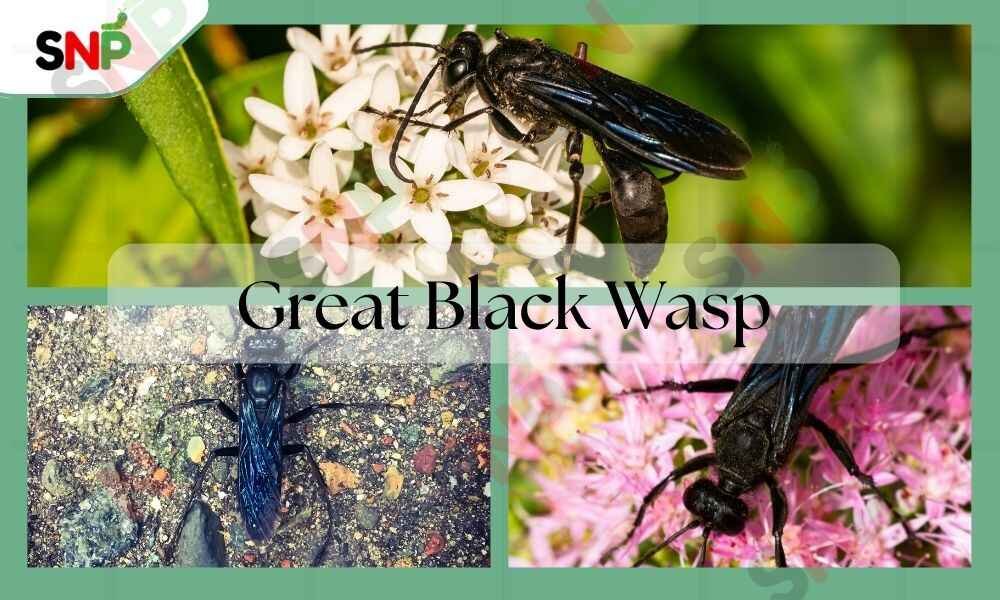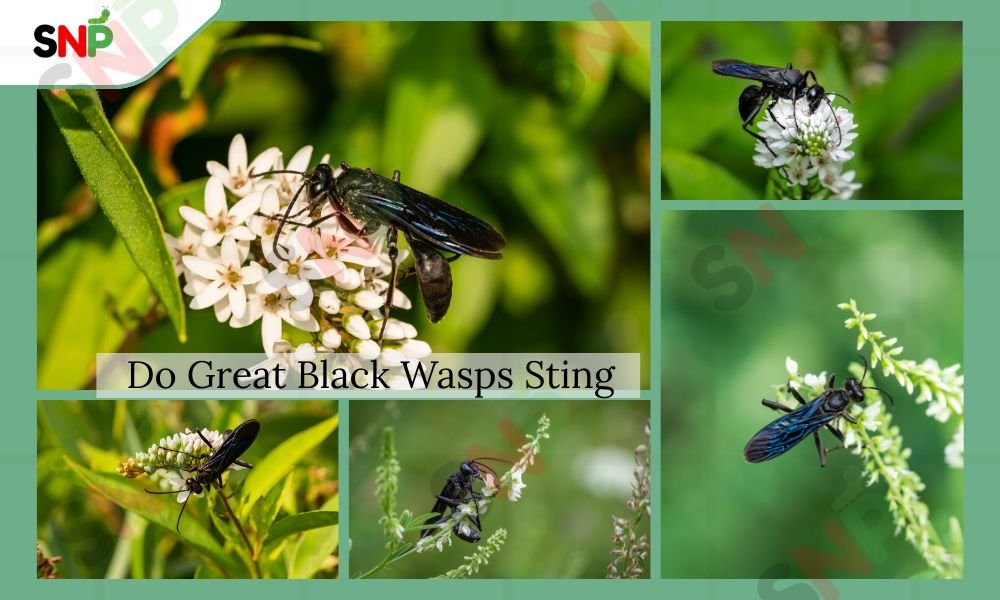The Great Black Wasp: A Guide for American Homeowners

The great black wasp takes residence in summer gardens as a large, shiny black flying insect. Sphex pensylvanicus represents the scientific name of this wasp, which functions as a solitary digger wasp mainly present throughout most parts of the United States. Society perceives these wasps to be harmful beings despite their affirmative role in maintaining the ecosystem. People lack awareness of wasp ecology because they do not seek information about insects. The truth is that these wasps are not as harmful as most people imagine they are, despite their large size and scary looks. We aim to uncover as many realities as possible about the great black wasp, including the threat to humans, , the stinging behavior of the great black wasp lifespan, and the ways to reduce the risk of having them.
The Great Black Wasp: A Guide for American Homeowners
The female of the great black wasps is among North America’s largest wasp species, with her size being 1.3, with males slightly smaller. They are quite obviously black/faun and shiny with smoky blue iridescent wings, the solid colored wasps that are a great black wasp. On the other side, wasps have their lives in collective buildings, for instance those of a yellow jacket, in a leaf & mdash; large caterpillar nest while the great black wasps are quite autonomous with each female working on her own nest, which is often (but not always) underground and never forms colonies of her own.

Is the Great Black Wasp Dangerous?
Some people are concerned about is the great black wasp is dangerous to them. The answer given is not scary: these wasps do not easily get provoked. Since they are social, there is no protection for them, and consequently, there is no source of defensive behavior for humans. Only the great black wasp will sting if you handle them directly, and still, only the females are capable of stinging. These stings, which may be painful, are for the majority of the population consider non-medically important, unless you are very allergic to wasp venom.
Great Black Wasp Lifespan
The great black wasp lifespan certainly gives a clue as to their seasonal occurrence. The life cycle is initiated by the female by digging a hole in a well-drained soil where she makes her youngsters the chambers by laying the eggs in. After her prey’s hunt & stings, which include grasshoppers, katydids, or crickets, she paralyzes them with her sting, and afterwards, she places them in the hole of the nest, which serves as food for the babies who are to be born. The larvae then feed on these paralyzed insects for about 10 days, and later, the adult wasps, after pupating for so many weeks, come in late summer, generally as an end of the cycle.
The great black wasp lifespan lives for quite a short time compared to other organic forms of life; they live a few weeks to a couple of months, but often it’s just a couple of weeks, which is the result of the weather. Female usually emerges after the males and may stay for a while and then be gone, it could be associated with their reproductive strategy or predators, and transportation. A new breed of wasp ends its cycle during the warm season, which is usually summer, and the cycle consists of only one such season.
Do Great Black Wasps sting?
One common question is: Do great black wasps sting? Yes, they do, but there is an important context for that. It is only the female great black wasps that have stingers which they primarily use for paralyzing prey rather than for defense. Male great black wasps do not possess any stinger structure. Pain is a common effect of a great black wasp sting, although the sting is not as risky as different types of wasps, and these wasps sting people only when specifically provoked or handled wrong.
The typical signs of a great black wasp sting include pain at the site, combined with redness and tissue swelling. Despite being rare, most allergy sufferers still face a risk of serious reactions if they come into contact with these insects.

How to Manage or Kill Great Black Wasps
If you are not feeling safe about great black wasps making their nest near your home, there are indeed several ways to manage them that are safe and effective:
- Soap and Water: A simple mixture of dish soap and water applied to a nest is sufficient to cause wasps to suffocate and die.
- Wasp Traps: The use of homemade traps with sugary syrup can effectively reduce the number of wasps around.
- Essential Oils: Wasp-repelling aromas including but not limited to oils from peppermint, clove, and citrus are also an effective solution to protect the house from wasps nesting near it.
- Seal Entry Points: One method that may work for getting rid of wasps is to cover the cracks and close the cans to prevent wasp from getting on your property.
- Professional Pest Control: For cases of huge or unreachable nests or in the event of allergy symptoms, hiring the experts in the field of pest control is the ideal option.
Conclusion
Great black wasps establish themselves as beneficial insects because they manage pest outbreaks and contribute to flower pollination activities. These insects appear frightening due to their size, but they avoid aggressive behavior and present minimal danger to people only when exposed to harm. Great black wasps live for a short time, mainly through prey hunting behavior instead of defending their nest. The question exists about whether great black wasps will sting humans, and the answer becomes clear when they feel threatened.
The understanding of great black wasp lifestyle and ecological advantages allows us to better appreciate their ecological role and execute secure home pest control. When necessary removal should be performed by using proper pest management techniques or getting help from professional experts. Through proper techniques you can live alongside great black wasps while maintaining safety for both humans and your properties.
Related Posts
Wasp Pest Control: The Ultimate Guide for Effective Protection
The homeowner can find it hard to deal, particularly with aggressive and persistent stinging insects on his or her yard or home. The inexplicable way of wasp pest control is essential because it is necessary to be much more than convenient and comfortable in particular, since some of the species are rather dangerous to the […]
Is the Great Black Wasp Dangerous? Everything You Need to Know
Regarding pest management in the United States, most homeowners have encountered the great black wasp, a striking, solitary insect that can be alarming due to its size and intimidating appearance. This blog will address the main questions frequently asked about this wasp, clarify is the great black wasp dangerous or just a myth, and provide […]
Great Black Wasp: Explore the Truth about them
Have you ever jumped out of your place when a great black wasp flew by your flowering garden? Wondering you probably have even seen the great big black wasp. Although these wasps might quite scary due to their size and look, they serve a critical purpose in the ecosystem that is very different compare to […]
Quick Link
Services
